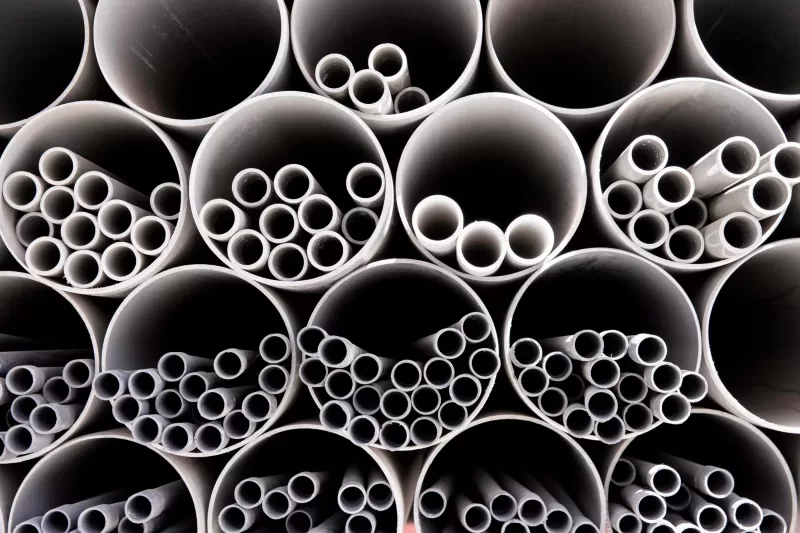Sustainability has become more than just a buzzword—it’s a competitive edge. Beyond reducing carbon footprints, it enables future-proof businesses. And plumbers play a crucial role in implementing sustainable solutions, as their expertise ensures proper installation and maintenance of eco-friendly piping systems, helping to maximize both efficiency and longevity. Companies leading in sustainability are attracting premium clients, gaining regulatory advantages, and avoiding the hidden costs of non-compliance or reputational damage.
Pipes, often overlooked, are the arteries of our infrastructure. A single innovation—like switching to biodegradable or recycled materials—can transform the industry, affecting billions of gallons of water or energy transported annually and reducing waste at an unprecedented scale. Pipes are the unsung heroes of sustainability: reducing leaks conserves water, while better insulation minimizes energy loss. By using sustainable PVC pipes, these benefits multiply, saving resources and ensuring recyclability after decades of use.
Overview of Traditional Pipe Materials
Stainless steel and PVC have dominated the industry for decades, but there’s a catch: these materials prioritize cost over conservation. Despite their widespread use, they were designed with permanence in mind, neglecting their environmental aftermath.
PVC production releases harmful dioxins, chemicals linked to serious health risks. Steel, while recyclable, requires significant energy and contributes to deforestation through mining activities. The ripple effect of traditional materials is profound: high-energy manufacturing, inefficient transportation, and non-recyclable waste result in a substantial ecological footprint from production to disposal.
Emergence of Eco-Friendly Pipe Materials
The rise of sustainable sustainable PVC pipes is reshaping the industry. Innovations like mushroom-based bioplastics, hemp-reinforced composites, and graphene-enhanced materials are leading the charge. These materials are lighter, stronger, and optimized for a circular economy, delivering superior functionality with a fraction of the environmental impact.
Eco-friendly materials aren’t just greener—they’re smarter. Some can self-heal cracks, resist extreme temperatures, or break down into harmless compounds at the end of their lifecycle. Recycling is also evolving. Imagine pipes designed to be fully disassembled and reprocessed without degradation, enabling infinite reuse cycles without sacrificing quality.
Development Process
Advanced technologies like AI and machine learning are accelerating material design, identifying optimal eco-friendly composites in weeks instead of years. Coupled with zero-waste 3D printing, the future of pipe manufacturing looks radically efficient.
Hybrid materials, blending natural fibers like bamboo with recycled plastics, are emerging as cost-effective yet robust solutions. Modular production is key, allowing manufacturers to customize products without generating waste. Transitioning to these new methods requires overcoming challenges such as updating machinery, retraining workers, and securing consistent supplies of alternative materials, but bold investments can make it happen.
Applications and Real-World Examples
Sustainable PVC pipes are making a significant impact in various industries. Renewable energy systems, such as solar and wind farms, rely on lightweight, corrosion-resistant pipes, while sustainable irrigation systems in agriculture reduce water loss and energy consumption.
Companies like Sweden’s Lindab are innovating with recycled steel for drainage pipes, and India’s TOMBO Pipes integrates agricultural waste, such as rice husks, into their products, reducing plastic use and solving waste problems simultaneously. Eco-friendly pipes are proving their durability, even outperforming traditional materials in harsh environments like saltwater.
Environmental and Economic Benefits
The advantages of sustainable materials go beyond direct cost savings, such as lower emissions during production. Lightweight pipes reduce fuel consumption during transport, while leak-proof designs conserve water, amplifying their overall sustainability impact.
Moreover, sustainable materials save money over time through increased longevity and efficiency. A pipe lasting 50 years instead of 30 eliminates the need for multiple replacements, reducing labor and material costs. These innovations also align with global goals, such as SDG 6 (Clean Water) and SDG 13 (Climate Action), by preserving resources and reducing emissions.
Future Trends and Opportunities
The future of piping lies in smart materials embedded with sensors to monitor water flow and detect leaks. Innovations like hydrogen-powered production could eliminate fossil fuel reliance in manufacturing. Policies prioritizing green certifications and offering tax breaks or grants for sustainable practices can further drive the transition.
Consumer demand will be a decisive factor. By rejecting wasteful products and embracing eco-conscious ones, customers can accelerate industry change. Grassroots movements often outpace regulations, pushing the market toward sustainable solutions.
Conclusion
Pipes may be invisible until they fail, but their environmental impact is undeniable. Transitioning to eco-friendly materials now prevents invisible damage later and builds resilience into global infrastructure.
For individuals, choosing products with eco-friendly certifications is a small yet impactful step. Businesses can evaluate supply chains, switch to sustainable materials, and share their success stories to inspire others. Collaboration is crucial—shared research platforms, open patents, and cross-industry partnerships can fast-track sustainability while distributing costs. By working together, we can create a future where eco-friendly piping becomes the standard, not the exception.


